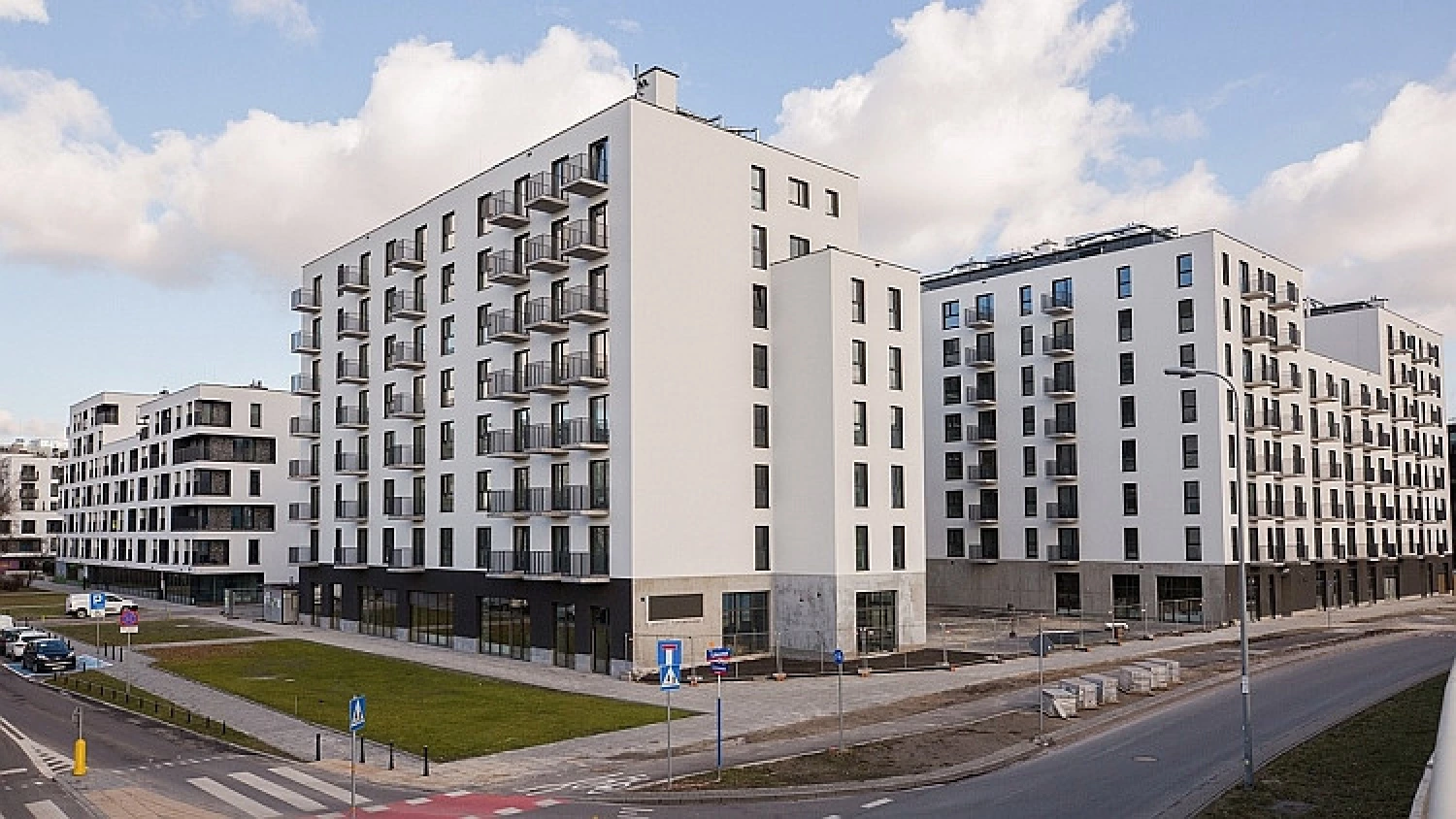
Poland has seen one of the fastest residential rental growth rates in the European Union in the last five years, with rental inflation in major cities rising to double-digit levels. This growth was largely driven by elevated financing costs, inflation and the migration of people to Polish cities. Average rents for a 1-bedroom flat in Warsaw are higher than in Prague, Vienna and Bratislava, but still well below those in London, Zurich or Dublin, says Cushman & Wakefield in its latest report.
Housing rents have been on an upward trajectory across the European Union in the last five years, with rental growth averaging 10.9%. Poland saw a 47% increase in rental rates and was overtaken by Hungary, which witnessed a 50% rise in the same period, and Serbia (a non-EU country).
"After the outbreak of the war in Ukraine, the availability of rental homes shrank considerably, resulting in a rapid surge in rents. This was coupled with galloping inflation, the cost of living crisis, and high interest rates which pushed mortgage instalments to unprecedented levels. The strongest five-year growth of 50% and 48% was posted in Kraków and Poznań respectively. Next came Warsaw with a 47% increase and Łódź with a 41% rise. The least intense growth was noted in Wrocław and Gdansk, where rents rose since 2019 by 36% and 31% respectively", says Karolina Furmańska, Residential Market Expert, Cushman & Wakefield.
Despite this growth, analysis of nominal housing rents in European capitals reveals that Warsaw still only comes thirteenth for rental levels. The highest rents are in Dublin, Amsterdam, Copenhagen and Luxembourg. London is even more expensive, with rents in June 2024 for a 1-bedroom flat in the city centre and non-central locations at more than €2,500 and around €2,000 respectively. Rent prices are also high in Bern, the Swiss capital, where they stand at around €2,200 in the city centre and €1,660 in non-central districts.
"It is also worth noting that there is a significant disparity between rental rates in central Warsaw and its peripheral districts which averaged €260 (approx. PLN 1,110) in June 2024. Average rent differentials between city centres and non-central locations in mid-2024 ranged between €89 in Athens and €472 in Copenhagen”, adds Karolina Furmańska.
Stabilisation and improving availability of rental apartments
In the second half of 2022, the demand for rental apartments began to stabilise, with the number of listings rising above the levels from before the outbreak of the war. In June 2024, there were nearly 7,000 listings of flats for rent in Warsaw on Otodom. The increased availability brought rental growth to a halt, with some cities reporting a correction.
"Analysis of median asking rents for various types of flats (studios, 1-, 2- and 3-bedroom flats) reveals that they rose across the board in Krakow. Rental growth was recorded for the largest flats in many cities, including Sopot, Poznań and Gdansk. By contrast, Katowice and Warsaw recorded slight declines in the median rents for the largest flats", explains Karolina Furmańska.
Given median rents in the largest Polish cities, the highest monthly rents for 3-bedroom flats are in Warsaw (PLN 6,900) and in Gdansk (PLN 6,500), with the lowest in Łódź (PLN 3,428) and in Poznań and Katowice (PLN 3,900 each).
Will the PRS change the rental market?
"The continued PRS growth is expected to have a significant and positive impact on the Polish rental market. The Polish PRS is still small compared to the entire rental housing market in Poland, which is dominated by private landlords. Poland’s PRS housing stock is comprised of just over 16,600 flats in the largest Polish cities, with another 30,000 rental flats expected to be added in the coming years. Official, precise statistics on the number of rental flats are not available, but it is estimated that there are nearly a million private landlords. As a result, it is private landlords who continue to set the terms”, says Karolina Furmańska.
Resi4Rent, Vantage Rent and Life Spot - the three largest PRS players - account for almost half of operating PRS projects. The increase in the PRS stock is likely to stabilise the rental market in the long term, making it a safe and reliable housing option with clear rules and a possibility to negotiate incentives or even lower rents for longer leases. An important aspect of this sector is the professionalisation of property management to enhance a tenant experience and offer flexible rental options while catering to the needs of a growing number of people choosing to rent rather than purchase increasingly expensive homes.
The co-authors of the report have identified several factors that could accelerate the growth of the PRS.
"With interest rates remaining high, elevated financing costs have been the main barrier to the PRS growth and have resulted in limited transactional activity in the last two years. However, when this problem eases on the back of falling inflation - expected to occur in the near future - investor interest in the PRS will grow, exponentially. Demand fundamentals remain very strong - both in the PRS and in other living subsectors such as student housing, co-living and serviced apartments for seniors”, says Karolina Furmańska.
"A major factor holding back investment in the PRS is unfavourable tax regulations. As of 1 January 2025, the definition of a ‘structure’ subject to real estate tax will change. The announced amendment to the Local Taxes and Charges Act will undoubtedly impact not only the PRS but the entire real estate market”, says Joanna Prokurat, PhD, Partner, Tax Advisory, TPA Poland.



